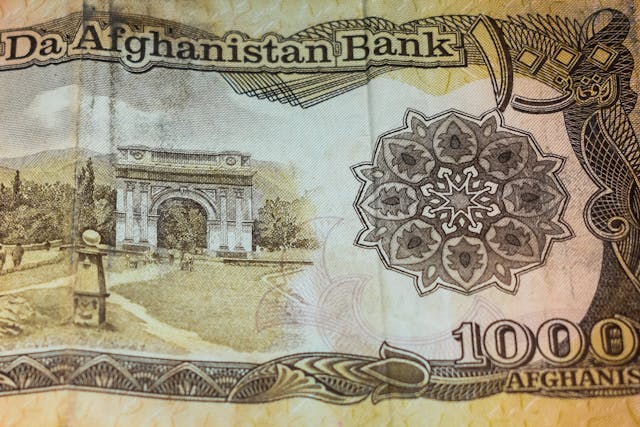The Afghan Afghani (AFN) is one of the most compelling currencies in the world, not only because it represents Afghanistan’s economy and history but also due to its role in daily life for millions of Afghans. Whether you’re curious about its origins, need insight into its practical use, or are considering currency exchange, this guide will break everything down clearly.
Read on to learn about the Afghan Afghani’s background, its current role in Afghanistan’s economy, and how to exchange or use it securely and efficiently. We’ll also provide valuable insights into the currency’s features and its place in the global financial system.
What Is the Afghan Afghani?
The Afghan Afghani (symbol: ؋, code: AFN) is the official currency of Afghanistan. It is issued and regulated by Da Afghanistan Bank, the central bank of Afghanistan. The afghani is used in all parts of the country and is vital to facilitating economic activity, from everyday transactions to major trade deals.
The afghani is primarily a physical currency, with coins and notes used for payments and purchases. Unlike some global currencies with significant digital use, much of Afghanistan’s economy still relies on cash due to limited banking infrastructure in certain areas.
A Brief History of the Afghan Afghani
- Introduction in 1925
The first version of the Afghan Afghani was introduced in 1925, replacing the Afghan rupee. It symbolized modernization and Afghanistan’s growing financial independence.
- Reforms in 2002
After a period of economic instability marked by inflation and conflict, a new version of the currency was introduced in 2002. Supported by international organizations, this reform stabilized the value of the Afghan Afghani and set the foundation for its use today.
- Today’s Currency
The Afghan Afghani comes in denominations of coins (1, 2, and 5 afghanis) and banknotes, ranging from 1 AFN to 1,000 AFN. Each features significant cultural and historical imagery, reflecting Afghanistan’s history and values.
The Role of the Afghan Afghani in Afghanistan’s Economy
The Afghan Afghani is more than just a medium of exchange; it plays a central role in Afghanistan’s economy and financial stability. Here are some key areas where the afghani holds significance:
Everyday Transactions
For most people in Afghanistan, the afghani is essential for buying necessities such as food, clothing, and household goods. Traditional markets across the nation operate almost entirely on afghani cash, as digital payment adoption remains limited.
Trade and Commerce
While some large trade agreements involve foreign currencies like the U.S. dollar, the Afghan Afghani is still the backbone of local and regional trade. Vendors, small businesses, and logistics operators rely heavily on it.
Wage Payments
Salaries for government employees, teachers, and laborers are typically paid in afghanis. Ensuring the timely distribution of wages is critical to maintaining financial stability across communities.
Monetary Policy
Da Afghanistan Bank oversees monetary policy to maintain the currency’s value, control inflation, and strengthen the economy. This includes managing foreign exchange reserves and setting exchange rates with other currencies.
How to Exchange Afghan Afghani Securely
Whether you’re sending money to Afghanistan, planning a trip, or researching international finance, exchanging currency requires safety, efficiency, and reliability. Here’s how you can handle Afghan afghani exchanges securely:
Stay Updated on Exchange Rates
The afghani’s exchange rate can fluctuate due to changes in global financial markets and Afghanistan’s economic conditions. Be sure to compare rates before making an exchange to get the best value.
Verify Currency Notes
If you’re handling physical afghanis, check for security features like watermarks, security threads, and unique color patterns on the notes. This ensures you’re not receiving counterfeit currency.
Features of Afghan Afghani Banknotes and Coins
Afghan Afghani banknotes are designed with security, culture, and functionality in mind. Here are their main features:
- Cultural Designs: Notes feature images of mosques, landmarks, and other cultural symbols.
- Color Codes: Different denominations are color-coded to make them easier to distinguish at a glance.
- Security Measures: Watermarks, micro-printing, and holographic strips are integrated to prevent counterfeiting.
Coins are commonly used for smaller transactions and are designed to last in circulation for many years.
Challenges Facing the Afghan Afghani
While the afghani serves as a crucial currency for the Afghan economy, it also faces several challenges:
1. Inflation
Afghanistan has experienced periods of high inflation, which can reduce the purchasing power of the afghani. This is a significant concern for low-income households.
2. Limited Banking Access
A large portion of the Afghan population does not have access to formal banking services. This limits the ability of citizens to save or transact using digital means.
3. Dependence on Foreign Aid
Afghanistan’s economy relies heavily on international assistance. External factors significantly influence the value of the afghani in global markets.
Why Understanding the Afghan Afghani Matters
The afghani’s story is one of resilience amidst challenges. For businesses, organizations, or individuals with ties to Afghanistan, understanding this currency is vital. It offers insights into the country’s economic health, cultural identity, and evolving financial systems.
Next Steps for Managing Afghan Afghani Transactions
If you’re looking to exchange, send, or transfer afghanis, ensure you’re using secure and reliable methods. Whether you’re supporting loved ones, doing business, or exploring Afghanistan’s incredible culture, the Afghan Afghani continues to play an essential role in connecting communities and fueling economic stability.
